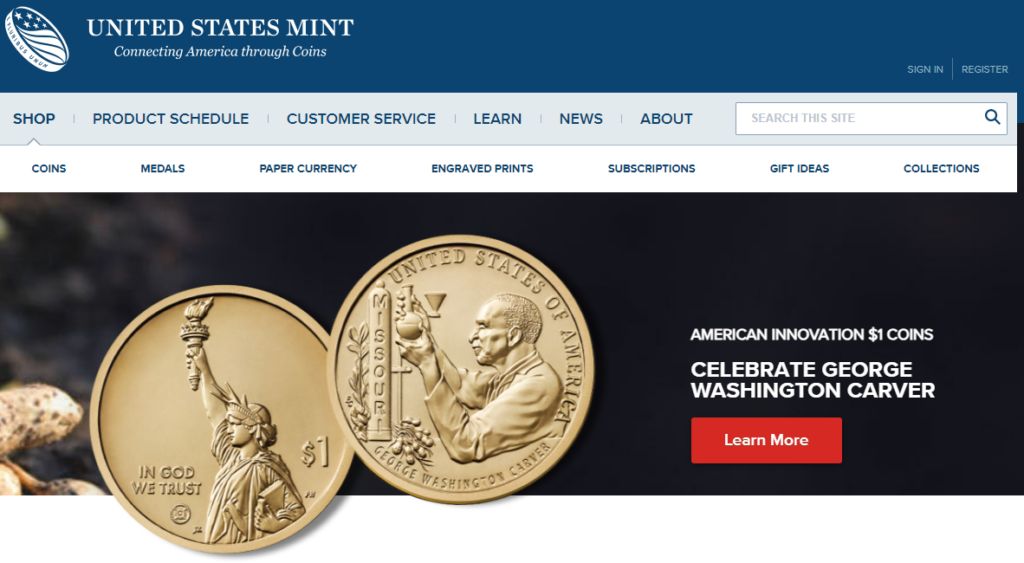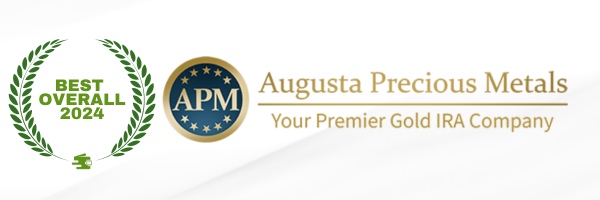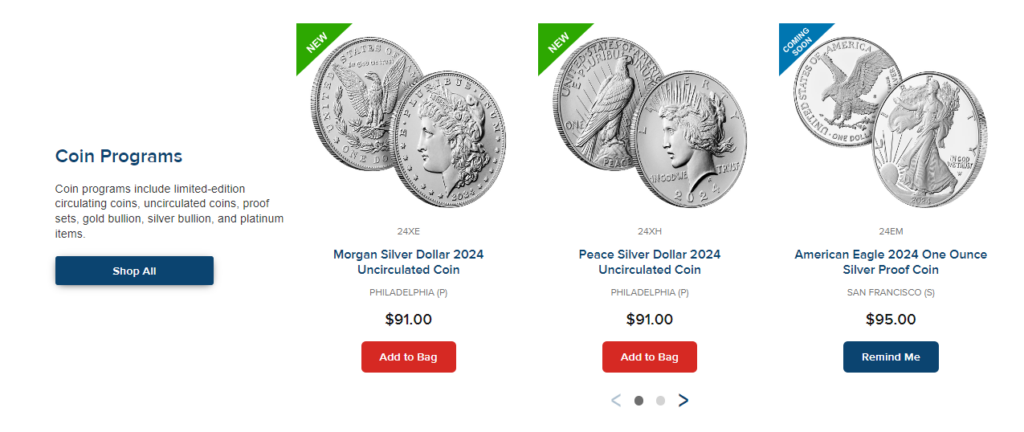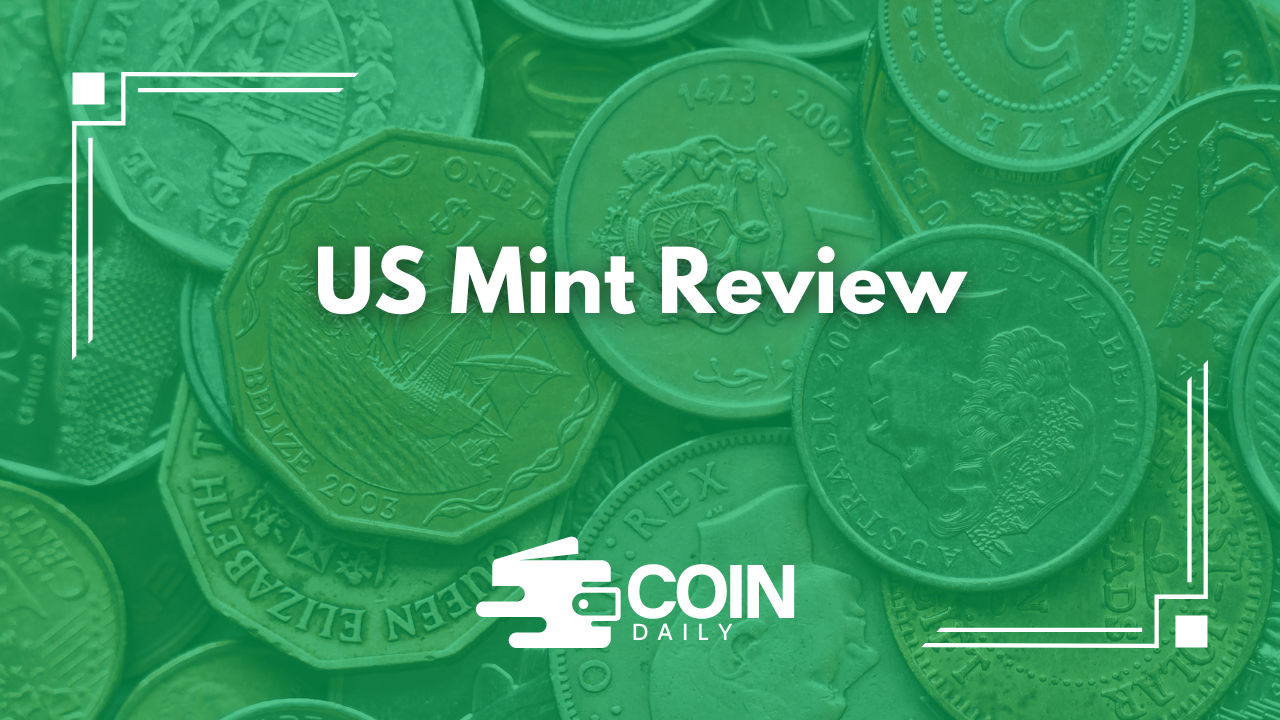The United States Mint has really made its mark on American history and finance as the nation’s official coin producer. I find its story absolutely fascinating, starting from its establishment and going through the key milestones that shaped its journey.
In this exploration, I’m diving into the Mint’s vital responsibilities, like how it supports the economy, the different types of coins it churns out, and the detailed process behind coin manufacturing.
For those who are into collecting, I’ll also share some tips on how to collect and purchase coins from this prestigious institution. So, let’s take a trip through the rich legacy of the United States Mint together!
What Is the United States Mint?
The United States Mint is such an important place for me when it comes to understanding our nation’s coinage and all things mint-related. It’s not just about making coins; it’s also a hub for coin collectors and a key player in the US currency system.
Established way back in 1792, it has a significant impact on both the economy and the numismatic community. I love how it caters to enthusiasts and investors with a wide variety of coins, including bullion coins, commemorative coins, and even those limited edition releases that make every collector’s heart skip a beat.

History of the United States Mint
I find the history of the United States Mint to be incredibly rich and fascinating, stretching all the way back to its establishment in 1792. It really captures how US currency and the numismatic market have evolved over time.
I’ve seen how the Mint has transformed over the years, from its early days of making coins to the highly advanced minting facilities we have today. They produce rare coins and maintain a comprehensive release schedule that gets both collectors and investors excited.
It’s pretty amazing to see how far it’s come!
How Was the United States Mint Established?
I find it fascinating that the United States Mint was established on April 2, 1792, thanks to the Coinage Act. This act was all about creating a stable and uniform currency for the young nation. It really set the groundwork for how coins were minted and authorized the creation of legal tender—basically, it paved the way for American currency and numismatic practices down the line.
Back then, the country was struggling with some major economic issues, like relying on foreign coins and not really trusting paper money. One of the big reasons behind starting the Mint was to make trade and commerce easier, which was crucial for growth. The coinage system wasn’t just about making money; it was also a way to show off national pride and sovereignty.
The minting process was quite the operation, too. They had to come up with precise designs, choose the right materials, and use techniques like striking and engraving. This ensured that each coin wasn’t just functional but also captured the historical essence of the nation.
Overall, the establishment of the United States Mint was a game-changer for standardizing currency and played a huge role in providing the economic stability that the country really needed.
What Are Some Key Events in the History of the United States Mint?
Throughout its fascinating history, I’ve seen the United States Mint play a pivotal role in American society. From rolling out commemorative programs to tweaking its coin release schedule based on market demands, each of these moments really shows how committed the Mint is to innovation and serving both coin collectors and the general public.
There have been significant milestones, like the unveiling of new coin designs and the launch of limited-edition series. These moments not only celebrate America’s rich heritage but also boost the numismatic values that collectors care about. I love how the Mint honors historical milestones through coins; it really resonates with enthusiasts like me, sparking both interest and investment in collectible pieces.
Plus, with the adjustments made to the release schedule, collectors can actually anticipate and plan their acquisitions, creating a lively marketplace. This thoughtful engagement truly highlights the Mint’s role as a keeper of history and a spark plug for enthusiasm in the world of numismatics.
What Does the United States Mint Do?
The United States Mint has some pretty important roles in the economy. I mean, it’s not just about cranking out those coins you see every day.
They produce everything from circulating coins to bullion and commemorative coins, all while making sure that US currency maintains its integrity and quality. But their job goes beyond just making coins; the Mint is crucial for maintaining economic stability and helping people feel confident in the monetary system.
What Are the Responsibilities of the United States Mint?
The United States Mint has a pretty wide range of responsibilities that I find fascinating. They produce legal tender coins, make sure the grading of those coins is spot on, and keep customer service standards high for both coin collectors and investors. This approach helps them meet the needs of the public while also protecting the integrity and value of US currency.
But it’s not just about making coins that you find in your pocket. The Mint also plays a big role in educating collectors through workshops, publications, and online resources. This commitment really enhances everyone’s understanding of coin value and helps create a lively numismatic community.
Accurate coin grading is super important, too, since it determines market value and helps collectors make smart purchasing decisions. By focusing on these responsibilities, the Mint not only maintains high standards in customer service but also strengthens the connection between the public and the intriguing world of coins.
How Does the United States Mint Contribute to the Economy?
I really appreciate how the United States Mint plays a significant role in our economy by producing high-quality US currency that builds public confidence and helps us protect against inflation. They do this particularly through issuing precious metals like gold, silver, and copper coins. It’s fascinating how their work not only supports our monetary system but also has a big impact on the broader coin market and investment strategies.
I’ve noticed that the Mint’s activities greatly influence numismatic trends. Collectors and investors are always on the lookout for coins that have intrinsic value and also tell a story about our culture and history. By minting limited edition releases and commemorative pieces, the Mint creates a lively marketplace that keeps people interested in coin collecting. Plus, it raises awareness about the economic benefits of tangible assets.
As these precious metals appreciate over time, I can see how the Mint’s contributions help stabilize the overall economic landscape. They provide a hedge against inflation and foster a sense of security among investors, which is something we can all appreciate!
Types of Coins Produced by the United States Mint
I find it fascinating how the United States Mint produces such a diverse range of coins. Each one has its own purpose and appeals to different collectors.
There are circulating coins that help with everyday transactions, commemorative coins that celebrate significant events, and then there are bullion coins that act as investments in the precious metals market.
It’s cool to see how these mint products cater to a variety of coin collectors while also playing important roles in both commerce and numismatics.
1. Circulating Coins
Circulating coins are really the backbone of US currency for me. They’re designed for everyday transactions and are super recognizable, including our trusty pennies, nickels, dimes, and quarters. Each of these coins has its own specifications that follow legal tender laws, which I find pretty interesting. The Mint’s production of these coins is essential for keeping our monetary system stable and supporting economic activity.
Each denomination has its own unique purpose, making cash transactions much more efficient. I also love how the designs on these coins often honor important figures, significant moments, or ideals from American history. It really cultivates a sense of national pride and identity.
With millions of coins being produced every year, the Mint plays a vital role in managing supply, making sure that our economy runs smoothly without any annoying coin shortages.
There’s something about the tactile feel of these coins and their role in everyday purchases—from vending machines to local stores—that really highlights their importance. They help maintain our trust in the monetary system, creating a reliable way to exchange value that benefits both consumers and businesses alike.
2. Commemorative Coins
Commemorative coins are pretty fascinating—they’re special editions made by the United States Mint to honor significant historical events, figures, or anniversaries. What’s cool is that they often have unique designs that boost their numismatic value. These limited runs not only celebrate American heritage but also catch the eye of coin collectors and investors looking for standout pieces to add to their collections.
I love how the artistry in these coin designs reflects important themes, turning each one into a little work of art. Take the 2009 Lincoln Bicentennial coin series, for example—it featured intricate illustrations of Lincoln that showcased both his early years and his lasting legacy. The appeal of these coins isn’t just about how they look; they also tell stories about history and culture through metal.
Collectors are really drawn to these limited production runs, knowing that such pieces can appreciate in value over time. It adds a dynamic element to their investment portfolios, making it all the more exciting!
3. Bullion Coins
I find bullion coins pretty fascinating, especially the well-known ones like the American Eagle and American Buffalo. The United States Mint produces them mainly as investment coins, which means they let me invest in precious metals like gold and silver. Their value comes from the metal content, and they’re a popular pick for anyone looking to protect against inflation and diversify their investments.
What I really like about these investment options is not just their intrinsic value but also their liquidity. It’s super convenient to buy or sell them as market conditions change. I often hear that investors lean toward bullion coins because they’re recognized worldwide and can help hedge against economic uncertainty. The mint’s careful production processes ensure top-notch quality and purity, which definitely boosts my confidence as an investor.
Incorporating these precious metals into my overall investment strategy feels like a smart move. They complement traditional assets like stocks and bonds, helping to create a balanced portfolio that can lower risk.
Check Out the Best Gold IRA Company of 2024
There are over 200+ gold IRA companies in the US and among all of them, I believe Augusta Precious Metals is the best one so far.

Augusta Precious Metals ranks as the #1 gold IRA company in the US. And that’s for good reason.
They have some of the best product catalogs with gold, silver, platinum, and palladium products to offer. But the main highlight is their dedicated web conference and the added focus on client education.
Augusta has an A+ rating on BBB, 1000+ client testimonials, and has been awarded “Most Transparent Company” in 2023 by Investopedia.
No other company puts as much focus on educating their clients about the different aspects of gold IRAs as they do.
My own experience with them was amazing to say the least.
However, their minimum investment requirement is $50,000 which limits the number of people who can open a gold IRA with them. Still, if you have the budget, you shouldn’t look elsewhere.
How Are Coins Made at the United States Mint?
The minting process at the United States Mint is quite an intricate journey, and I find it fascinating how each step is carefully designed to ensure top-notch quality in coin manufacturing.
It all starts with the initial design and engraving, and then it moves on to the final striking and inspection of the coins. This detailed process makes sure that each coin meets strict standards and keeps the integrity of US currency intact.
It’s amazing to think about all the work that goes into producing something so seemingly simple!
1. Design and Engraving
The design and engraving phase is such a pivotal part of the minting process for me. It’s where talented design artists come in and create unique coin designs that really capture the theme and purpose of each coin. Then, those intricate engravings bring those designs to life. This step is super important because it ensures that each coin isn’t just functional but also visually appealing to collectors and investors alike.
But the importance of coin design goes way beyond just looking good; it tells historical stories, showcases cultural symbols, and commemorates significant events, turning each coin into a little piece of art. I love how design artists carefully incorporate elements like texture, imagery, and symbolism into their engravings, which really enhances the storytelling potential of the coins. Every engraved line and detail helps shape the coin’s identity and emotional impact.
In the end, these artistic touches not only make a coin more attractive but also boost its perceived value in numismatic circles and the broader market. It’s amazing how much depth and significance goes into each coin!
2. Blanking and Annealing
Blanking and annealing are super important steps in the minting process. First, I cut metal sheets into blanks that will eventually become coins. Then, I anneal them to relieve any stress in the metal and get them ready for striking. These steps make sure that each coin meets specific standards and is prepped for the next stages of production.
During the blanking phase, I use precision machinery to cut out circular pieces from the metal sheets, creating uniform coin blanks that are the foundation of any currency. This initial step is crucial because it really sets the thickness, diameter, and overall quality of the coins that come out of it.
After blanking, annealing comes into play. This is where I heat and cool the blanks to get rid of any internal stresses caused by the cutting process. This treatment makes the metal more malleable, which is key since it needs to withstand the intense pressure during striking without cracking or distorting.
As I carefully execute these procedures, I know they play a big role in maintaining the integrity and durability of U.S. currency, helping to preserve its value and usability for years to come.
3. Striking and Inspecting
In the striking and inspecting phase, I watch as the prepared blanks are pressed with dies to imprint the coin’s design. It’s followed by a thorough inspection to make sure each coin meets the Mint’s quality assurance standards. This step is super important to ensure that only the best quality coins make it into circulation or get set aside for collectors.
The technology behind this process is really impressive. They use advanced hydraulic presses that deliver an incredible amount of pressure to create a crisp and detailed imprint. After the striking, high-definition cameras and sophisticated software come into play, meticulously examining each coin for any flaws. They catch any imperfections that might hurt the coin’s value or integrity.
Quality assurance is something I can’t stress enough; it guarantees that every piece of currency produced earns the public’s trust. When people know their money has gone through such rigorous scrutiny, it boosts their confidence in the currency’s authenticity and stability, which is vital for the whole economic system.
Collecting Coins from the United States Mint
Collecting coins from the United States Mint is such an exciting and rewarding hobby for me. It’s like a treasure hunt, with access to a range of mint products, exclusive coin offers, and membership programs that really make the collecting experience even better.
Whether I’m a seasoned collector or just dipping my toes in, I’ve found plenty of resources out there for online ordering and discovering new gems to add to my collection.
1. How to Purchase Coins from the United States Mint
Purchasing coins from the United States Mint is pretty straightforward. I usually do it online through their official website, where I can browse all the mint products and pick out the coins I want, while keeping an eye on the shipping policies and return options. Knowing how this all works is key to having a smooth buying experience.
- First, I head over to the Mint’s online shop to explore different categories like commemoratives, bullion, and special editions.
- Once I find the coins I want, I add them to my shopping cart and move on to checkout.
- Regarding payment, I typically have options like credit cards, debit cards, and sometimes even digital wallets—gotta love the variety!
After I make the payment, I always take a moment to review the shipping policies. They outline delivery times and fees, plus any geographical restrictions I should be aware of. It’s also smart to familiarize myself with the return policy just in case there are any hiccups with the products I receive. That way, I can feel confident throughout the whole ordering process.
2. Popular Collectible Coins from the United States Mint
I love exploring the range of collectible coins offered by the United States Mint. They really cater to both serious numismatists and casual collectors like me, with unique designs and themes that boost their numismatic value. It’s fun to flip through coin catalogs and see these coins, each showcasing their historical significance and investment potential.

Take the iconic American Eagle series or the gorgeous America the Beautiful quarters, for example. Each coin tells a fascinating story and represents an important piece of American heritage. I find that collectors often seek these coins not just for their good looks, but also for their potential to appreciate over time. Coins commemorating historical events or figures carry deep meaning, making them prized possessions in any collector’s portfolio.
When I invest in these standout coins, I get to appreciate their beauty and craftsmanship while also contributing to my financial security through smart numismatic choices. It’s a win-win!
3. Tips for Collecting Coins from the United States Mint
Collecting coins from the United States Mint is all about having a solid plan and paying attention to the little details. I’ve picked up some essential tips along the way, like understanding how to preserve coins and figuring out the best ways to store them to keep their quality and value intact over time. Trust me, these strategies really help me get the most enjoyment and investment potential from my collection.
Regarding preserving coins, I always make sure to use the right materials. Acid-free holders, coin flips, or capsules are my go-to choices since they keep my coins safe from physical damage and tarnishing. I also pay attention to the environment where I keep them; a stable humidity and temperature can make a big difference in protecting these valuable pieces.
For storing my collection, I’ve invested in secure options like safe deposit boxes or home safes. It’s all about keeping them safe from theft and environmental hazards. And staying informed? That’s key!
I subscribe to numismatic newsletters, join collector clubs, and regularly check out online forums. This way, I get the scoop on upcoming releases, trends, and new investment opportunities that can really boost my collecting strategy.
If you want to learn about identifying gold IRA scams, I recommend getting this free checklist. It will equip you with the knowledge you need to avoid potential gold IRA scams.
Frequently Asked Questions
What is United States Mint Review?
United States Mint Review is an evaluation of the United States Mint and its operations, products, and services. It provides an in-depth look at the performance and efficiency of the Mint as well as customer satisfaction with its products.
How often is the United States Mint Review conducted?
The United States Mint Review is conducted annually by the Department of the Treasury’s Office of Inspector General. The review covers the previous fiscal year’s operations and is usually released in the fall.
What information is included in the United States Mint Review?
The United States Mint Review covers a wide range of topics including the Mint’s financial performance, production and sales of coins and medals, customer service, security, and adherence to laws and regulations. It also includes recommendations for improvement and a response from the Mint’s management.
How can I access the United States Mint Review?
The United States Mint Review is publicly available and can be accessed on the Department of the Treasury’s Office of Inspector General website. It can also be requested directly from the Mint through their Freedom of Information Act (FOIA) office.
Why is the United States Mint Review important?
The United States Mint Review is important because it provides transparency and accountability for the Mint’s operations and use of taxpayer funds. It also serves as a tool for identifying areas for improvement and ensuring the Mint is meeting its mission of producing and distributing coins and medals to the American public.
Is the United States Mint Review the only way to provide feedback on the Mint?
No, the United States Mint accepts feedback and suggestions from the public through its website and social media channels. They also have a customer service hotline for inquiries and concerns about their products. However, the United States Mint Review provides an official evaluation and assessment of the Mint’s operations and is conducted by an independent entity.



